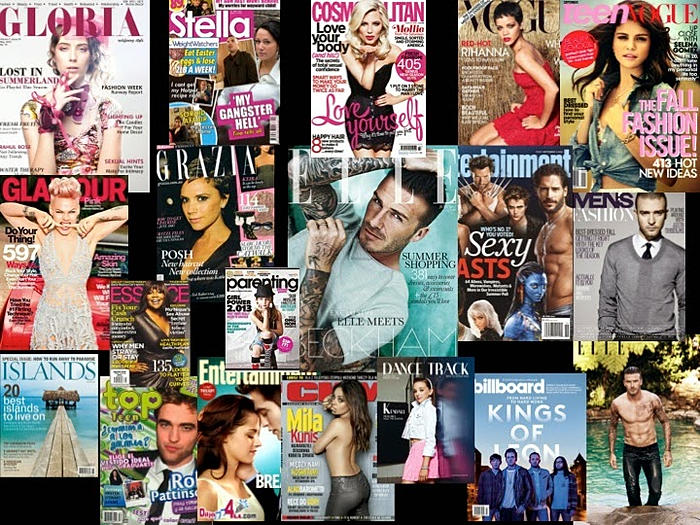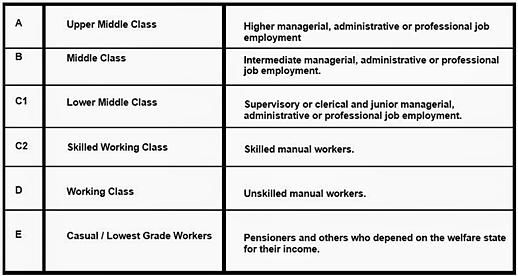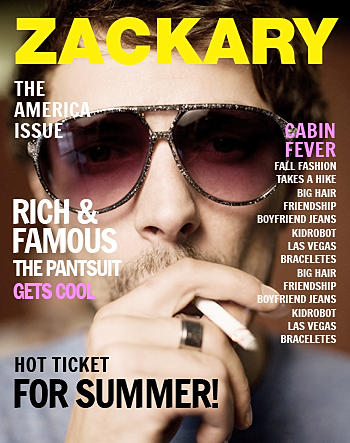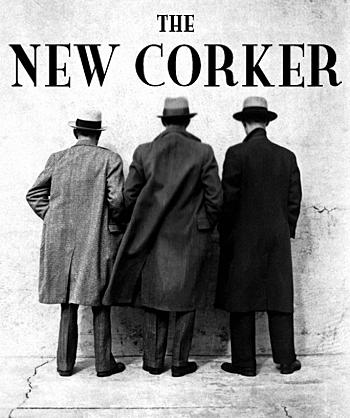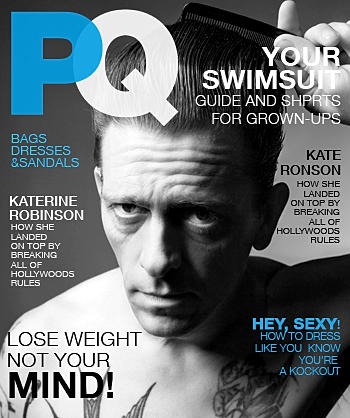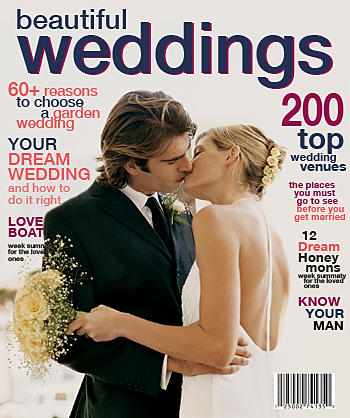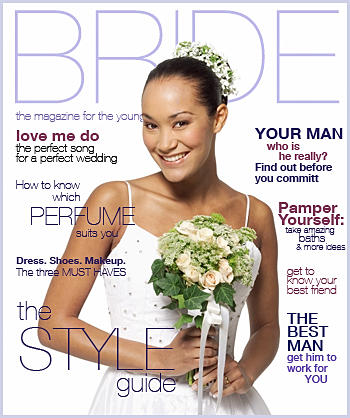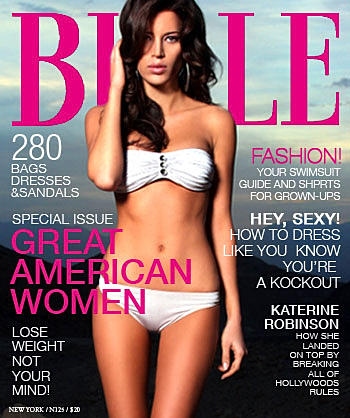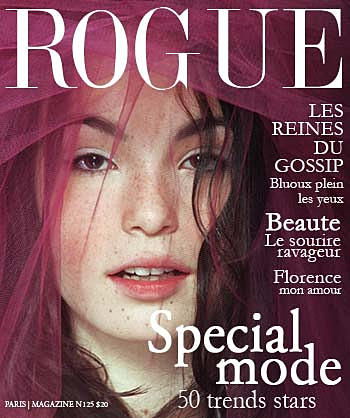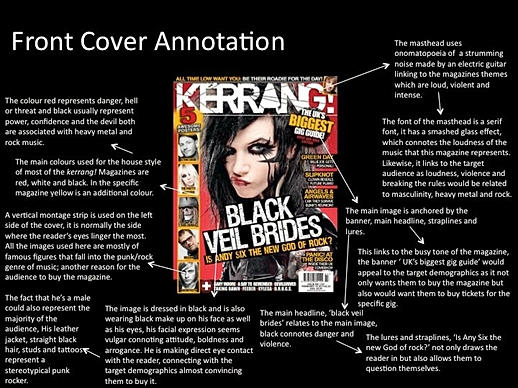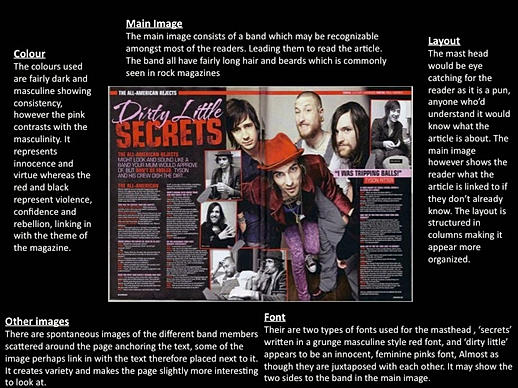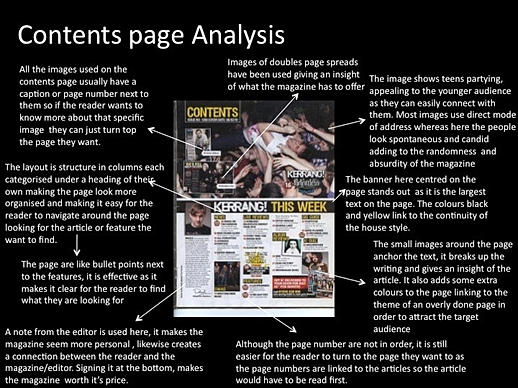I analysed several magazines in order to adapt a better idea of the conventions of music magazines. One of those was Kerrang.
The Masthead
The masthead uses onomatopoeia of a strumming noise made by an electric Guitar linking to the magazines themes which are loud, violent and intense.
It creates a housestyle that is well known and easily recognizable. The masthead can sometimes be partly covered by the main image.
Loudness and breaking the rules are stereo-typically related to masculinity, heavy metal and rock.
The serif font has a smashed glass effect, which connotes the extremity of the music that the magazine represents.
Facts and Figures
The publishing company for Kerrang is Bauer Consumer Media
The cover price is at £2.20 which is a standard price for the audience - who are mostly students with low income. EMAP advertise the magazine more through Kerrang TV and Radio, which allows for more circulation figures. It overtook 'NME' as the number one rock/music magazine in the UK.
Target Audience
Kerrang is aimed at a male audience and appeals to them by using content such as hard rock and metal iconic male bands on the front cover with angry faces.
Female readers are targeted by the use of male bands on free pull out posters or feature interviews.
The edgy underground and individual style appeals to rock readers. Advertisements such as Xbox, play.com and HMV appeal to the young male individuals who are the majority of the magazines demographics. Kerrang identifies its audience as,' individually minded, independent of thought and musically experienced, an audience defined by passion, loyalty and attitude.'
The audience of rock fans is made up of 60% male and 40% female. Kerrangs audience fall into the social class D-C. The magazine accommodates the young readership by using advertisements that relate to their interests.
Promotion
As well as owning a magazine, Bauer also own Kerrang's website, Kerrang TV and Kerrang Radio, as a result they can easily promote the magazine through these media products attracting a greater readership.
